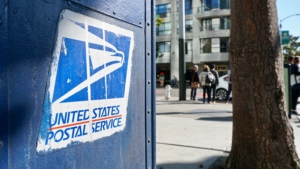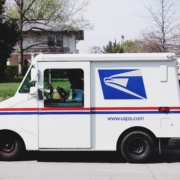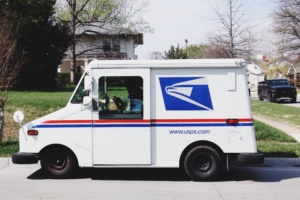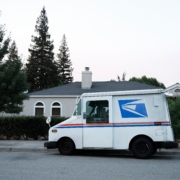USPS Rates 2022 Peak Season
U.S. Postal Service Announces Proposed Temporary Rate Adjustments for 2022 Peak Holiday Season
The United States Postal Service recently filed notice with the Postal Regulatory Commission (PRC) regarding a temporary price adjustment for key package products for the 2022 peak holiday shipping season. This temporary rate adjustment is similar to ones in past years that help cover extra handling costs to ensure a successful peak season.
The planned peak-season pricing, which was approved by the Governors of the Postal Service on Aug. 9, would affect prices on the following commercial and retail domestic competitive parcels: Priority Mail Express (PME), Priority Mail (PM), First-Class Package Service (FCPS), Parcel Select and USPS Retail Ground. International products would be unaffected. Pending favorable review by the PRC, the temporary rates would go into effect at 12 a.m. Central on Oct. 2 and remain in place until 12 a.m. Central Jan. 22, 2023.


This seasonal adjustment will bring prices for the Postal Service’s commercial and retail customers in line with competitive practices. No structural changes are planned as part of this limited pricing initiative.
Delivering for America, the Postal Service’s 10-year plan for achieving financial sustainability and service excellence, calls for appropriate pricing initiatives. The US Postal Service continues to report that it “has some of the lowest postage rates in the industrialized world and continues to offer great values in shipping. These temporary rates will keep USPS competitive while providing the agency with the revenue to cover extra costs in anticipation of peak-season volume.”
The proposed price changes include:
Priority Mail and Priority Mail Express:
Commercial:
o $0.75 increase for PM and PME Flat Rate Boxes and Envelopes.
o $0.25 increase for Zones 1-4, 0-10 lbs.
o $0.80 increase for Zones 5-9, 0-10 lbs.
o $0.75 increase for Zones 1-4, 11-25 lbs.
o $2.80 increase for Zones 5-9, 11-25 lbs.
o $3.00 increase for Zones 1-4, 26-70 lbs.
o $6.50 increase for Zones 5-9, 26-70 lbs.
Retail:
o $0.95 increase for PM and PME Flat Rate Boxes and Envelopes.
o $0.30 increase for Zones 1-4, 0-10 lbs.
o $1.00 increase for Zones 5-9, 0-10 lbs.
o $0.95 increase for Zones 1-4, 11-25 lbs.
o $3.20 increase for Zones 5-9, 11-25 lbs.
o $3.25 increase for Zones 1-4, 26-70 lbs.
o $6.45 increase for Zones 5-9, 26-70 lbs.
First-Class Package Service, Parcel Select Ground, and USPS Retail Ground:
Commercial:
o $0.25 increase for Zones 1-4, 0-10 lbs.
o $0.40 increase for Zones 5-9, 0-10 lbs.
o $0.75 increase for Zones 1-4, 11-25 lbs.
o $1.60 increase for Zones 5-9, 11-25 lbs.
o $3.00 increase for Zones 1-4, 26-70 lbs.
o $5.50 increase for Zones 5-9, 26-70 lbs.
Retail:
o $0.30 increase for Zones 1-4, 0-10 lbs.
o $0.60 increase for Zones 5-9, 0-10 lbs.
o $0.95 increase for Zones 1-4, 11-25 lbs.
o $2.70 increase for Zones 5-9, 11-25 lbs.
o $3.25 increase for Zones 1-4, 26-70 lbs.
o $5.85 increase for Zones 5-9, 26-70 lbs.
| Product | Current | Planned Increase |
| Parcel Select Destination | ||
| Delivery Unit (DDU) | Starts at $3.50 | .25 cents |
| Parcel Select DSCF | Starts at $3.77 | .75 cents |
| Parcel Select DNDC | Starts at $4.84 | .75 cents |
| USPS Connect Local | Starts at $3.95 | No Change |
| Parcel Select Lightweight (DDU) | Starts at $2.32 | No Change |
| Parcel Select Lightweight | ||
| (DSCF and DNDC) | Starts at $2.72 | No Change |
| Parcel Return Service | Starts at $3.37 | No Change |
A full list of commercial and retail pricing can be found on the Postal Service’s Postal Explorer website at https://pe.usps.com/text/dmm300/Notice123.htm
As is customary, the PRC will review the proposed prices before they are scheduled to take effect on Oct. 2. Complete USPS price filings, with prices for all products, can be found on the PRC website’s Daily Listings section at prc.gov/dockets/daily. Price change tables are also available on the Postal Service’s Postal Explorer website at pe.usps.com/PriceChange/Index.
The US Postal Service likes to remind us that it “generally receives no tax dollars for operating expenses and relies on the sale of postage, products, and services to fund its operations.”











